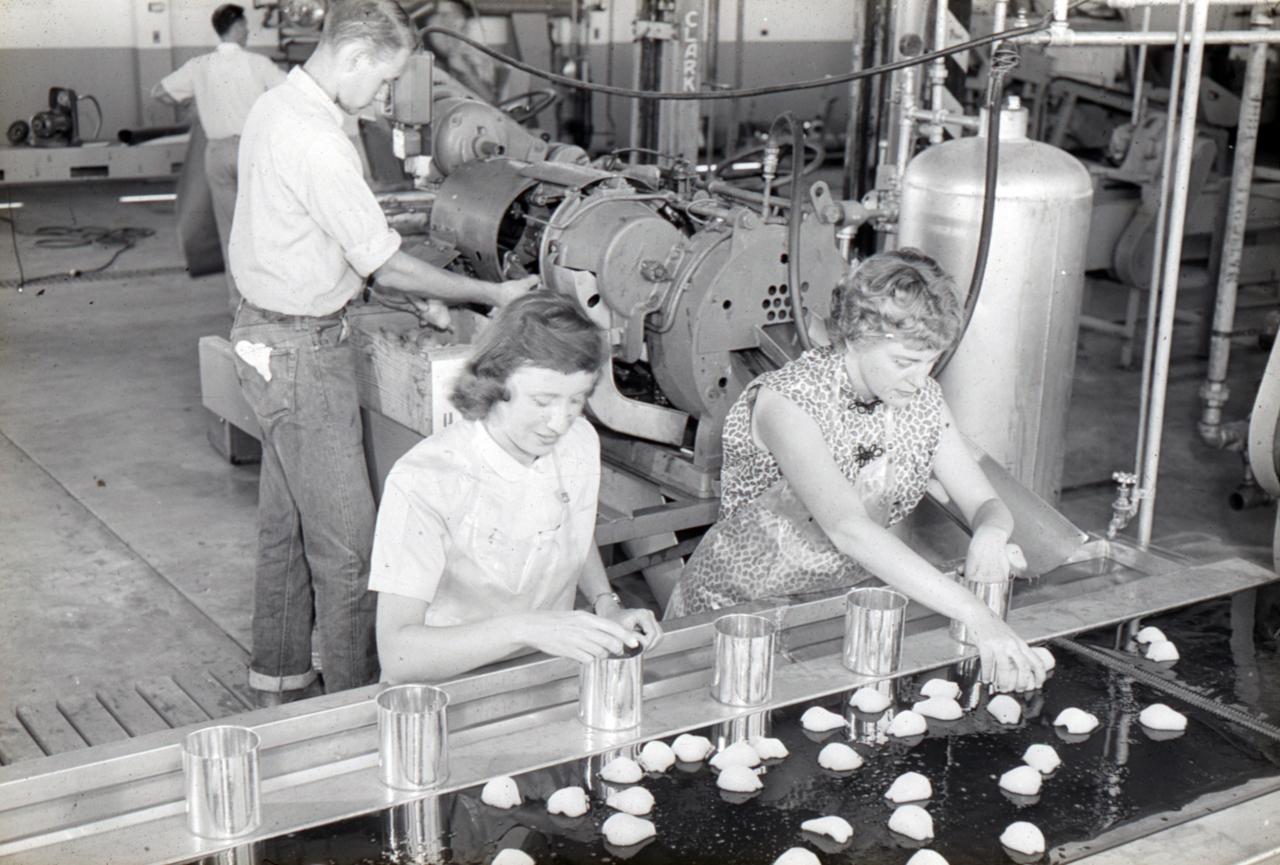
The food science and technology major offered at UC Davis is a well-rounded mix of theory and practice, with a hands-on learning approach being both effective and expected at California’s No. 1 agricultural school.1 This program is internationally recognized and is one of only 88 IFT HERB approved programs2, but how did this niche major come to be?
The demand for food science and research began a rapid growth during the Industrial Revolution.3 Many families moved away from farmlands and into the city. Now with densely populated areas without room for self-sustainable gardens or crops, the first ever highly processed foods began to debut on shelves, and mass production of food became possible with machine-powered packaging lines and refrigerated transport. However, as with all great movements, there was a dark side. Food became tampered with, and harsh chemicals became common in foods. With influence from Harvey Washington Wiley’s Poison Squad, the Food and Drug Administration was established in 1906 by Roosevelt to stop adulterated products from reaching the market.4
Just two years later, in 1908, UC Berkeley established a branch called the University Farm to comply with these agricultural innovations in Davis, California.5 Although the branch initially started as the viticulture and enology department along with the Department of Dairy Industry, by 1918, classes on dehydration and fruit concentrates began to take root.6 Slowly, the program grew, and in 1944 the Department of Food Technology took the stage with William Cruess as department chair. (Yes, as in Cruess Hall next to the Memorial Union!)
Finally, after 51 years, the Davis campus departed from Berkeley and became its own university in 1959. Emil Mrak, a well-known professor of food technology at Berkeley, advanced to the Chancellor position at UC Davis and served for 10 years.7 He merged the Department of Dairy Industry and the UC Berkeley Department of Food Technology into what we know it as today: The Department of Food Science and Technology! His legacy lives on at Mrak Hall, where the current Chancellor, Gary May, has his office.
Combining the innovation in dairy products as well as fruit processing from both sides of the departments has led to a legacy of successful research for the food industry. The food science and technology curriculum continues to evolve today. From 1993 to 2006, students needed to choose an emphasis for their major, such as Food Business and Management or Consumer Food Science. Now, the food science major offers a multitude of specific classes within a single program with an optional brewing track for students interested in beer and fermentation.
In 2008, the food science major classes moved out of Cruess Hall and into the newly built Robert Mondavi Institute for Wine and Food Science. Here, the world’s first LEED Platinum-certified facility was established as the August A. Busch III Brewing and Food Science Laboratory building (also known as the Brewery, Winery, & Food Pilot Plant Facility). This is awarded for demonstrating outstanding sustainable design, construction, and operation in a facility. Today, UC Davis is still transcending limits and making long lasting impacts on the food industry and research in food.
From eco-friendly cleaning products from yeast to securing podium spots in nationwide food product development competitions, the UC Davis Department of Food Science and Technology is constantly reinventing the food chain. If you’d like to dig into more of this department’s history, check out this timeline of events, or head to the department’s news page to get a scoop on events that are shaping history in real-time. You can also explore more food science blog articles on our website.


Gwen Gonzalez is a recent food science graduate with a passion for blending storytelling and food innovation. This summer, she is serving as a harvesting intern at ASV Wines, focusing on winemaking. When she's not thinking about food, she immerses herself in music and the performing arts at the Manetti Shrem Museum and Mondavi Center for the Performing Arts. In the future, she hopes to merge her interests in food and the arts through creative research and development in the food industry.
1 https://caes.ucdavis.edu/about/overview/rankings
2 https://www.ift.org/community/students/undergraduate-programs
3 https://www.visitthecapitol.gov/exhibitions/congress-and-progressive-era/pure-food-and-drug-act
4 https://pmc.ncbi.nlm.nih.gov/articles/PMC7323515/
5 https://foodscience.ucdavis.edu/about/history/timeline
6 https://foodscience.ucdavis.edu/about/history
7 https://www.latimes.com/archives/la-xpm-1987-04-14-mn-49-story.html
